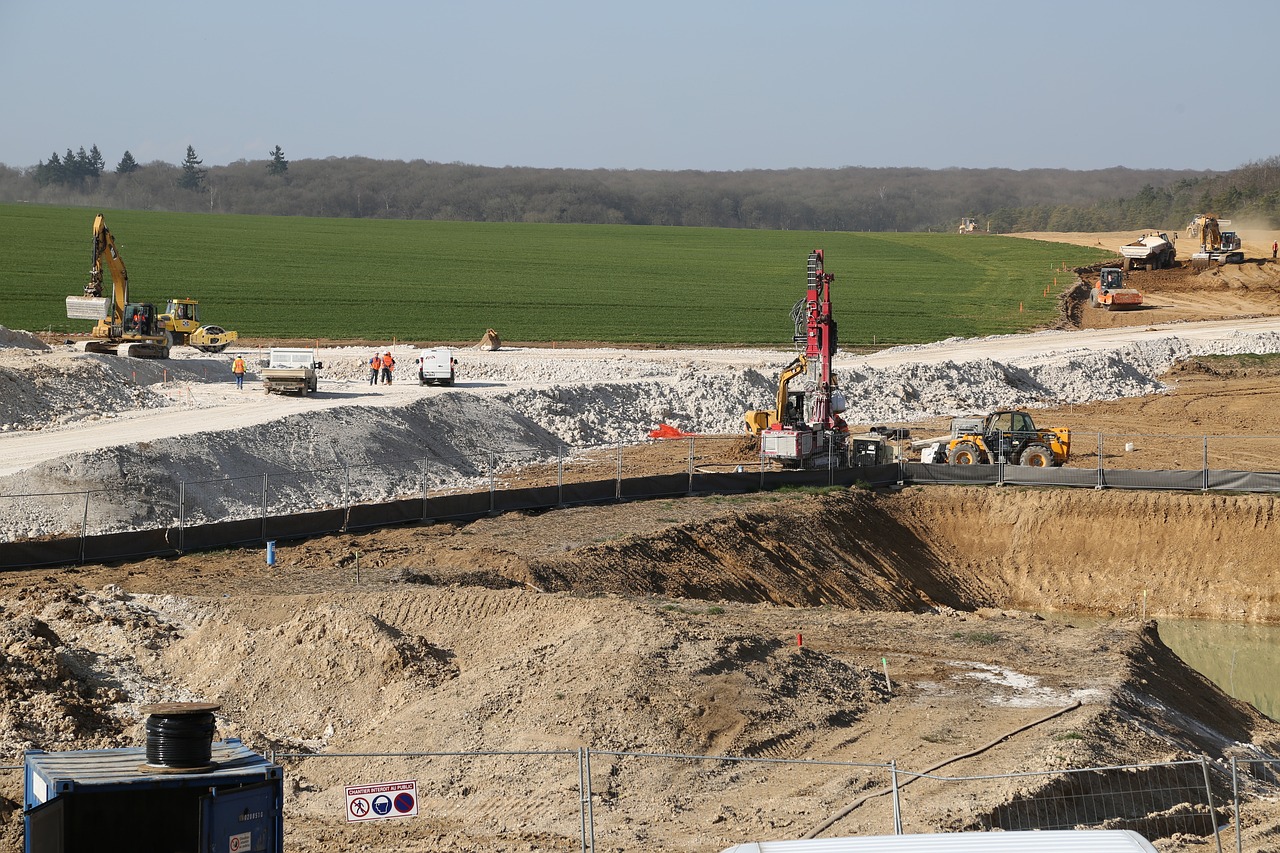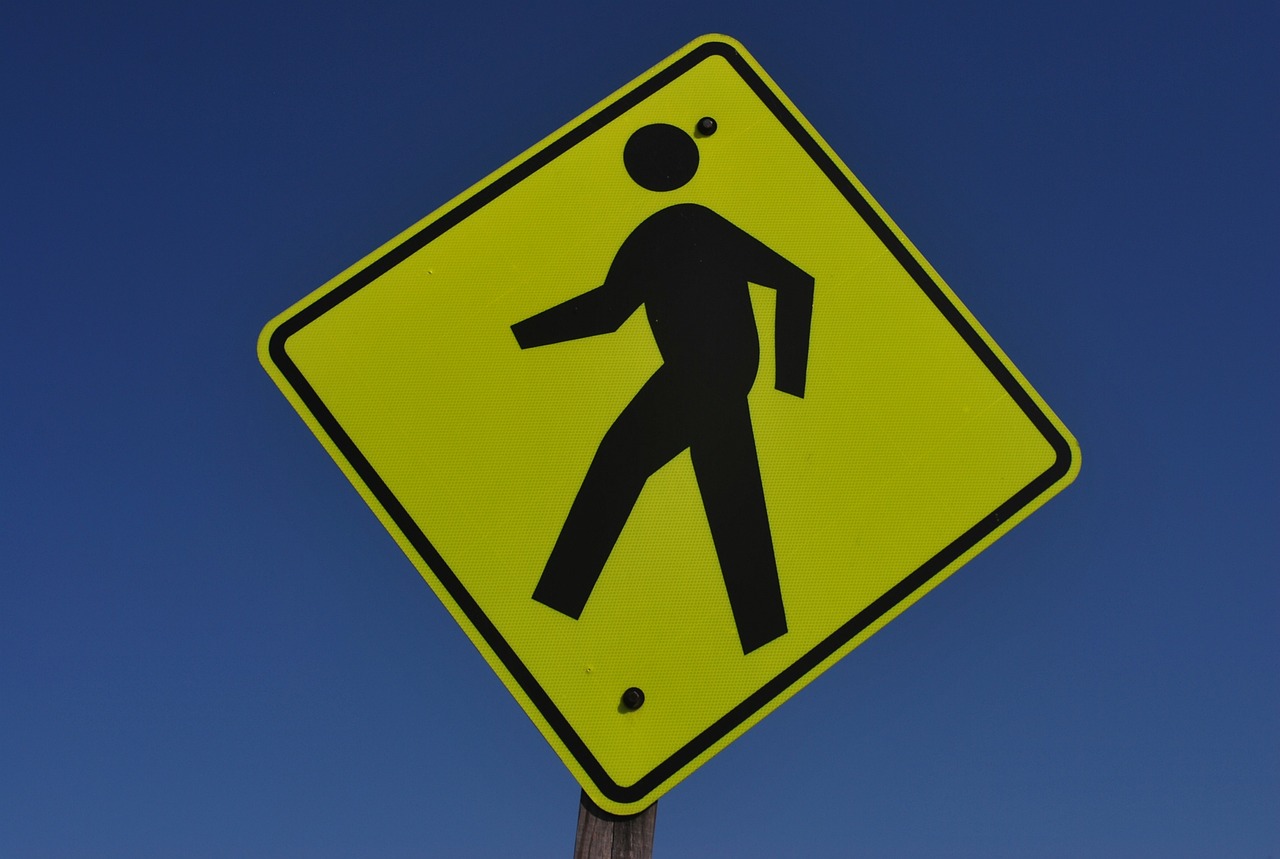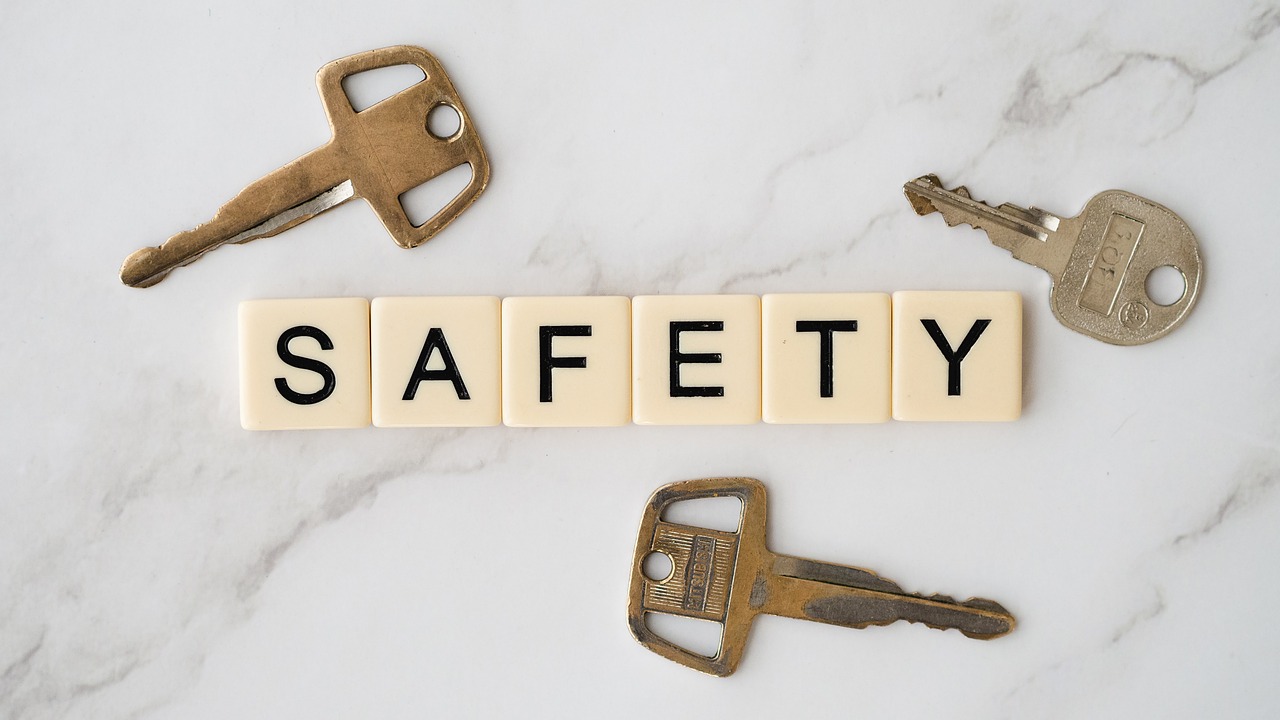Public Transit Safety – What You Need to Know
Public transit is an essential part of urban life, providing a vital link for millions of commuters every day. However, as convenient as it is, public transit safety is a topic that deserves our attention. Whether you're hopping on a bus, boarding a train, or riding a subway, understanding the safety measures in place can help you feel more secure during your journey. In this article, we will explore the various aspects of public transit safety, including risks, safety measures, the role of technology, and how community involvement can enhance safety for everyone.
When we think about public transit, we often focus on the efficiency and convenience it offers. But, just like any other public space, it comes with its own set of risks. From crowded platforms to late-night bus rides, the potential for incidents is ever-present. Some common risks associated with public transportation include:
- Theft and Pickpocketing: Crowded spaces can make it easy for thieves to operate unnoticed.
- Accidents and Injuries: Slips, trips, and falls are common, especially in poorly maintained areas.
- Harassment: Passengers may face unwanted attention or harassment from others.
These risks can impact passengers' safety and well-being, making it essential to stay vigilant and informed about the measures in place to protect you.
Transit authorities take public safety seriously and have established numerous protocols to protect passengers. From surveillance systems to emergency response strategies, these measures are designed to enhance safety across various public transit systems. Let's delve into some of these safety measures.
One of the most significant advancements in public transit safety has been the implementation of surveillance technologies. Cameras installed in stations and on vehicles help deter crime and provide valuable evidence in case of incidents. These systems not only monitor activity but also create a sense of security for passengers, knowing they're being watched over.
Transit authorities also have comprehensive emergency response protocols in place. These protocols are crucial during incidents, ensuring that help is dispatched quickly and efficiently. For example, if there’s a medical emergency or a security threat, trained personnel are ready to respond, minimizing risks to passengers. The importance of having clear and rehearsed emergency procedures cannot be overstated—it can mean the difference between chaos and calm in a crisis.
Another vital aspect of transit safety is the training provided to staff. Regular training programs help personnel stay updated on safety practices and emergency procedures. Well-trained staff can effectively manage situations and assist passengers, providing an additional layer of security. Imagine a well-prepared team that can swiftly handle emergencies—this is what makes public transit safer for everyone.
While transit authorities play a significant role in ensuring safety, passengers also have a part to play. Here are some practical tips to enhance your safety while using public transit:
- Stay Alert: Keep your eyes and ears open. Avoid distractions like your phone when waiting or boarding.
- Trust Your Instincts: If something feels off, don’t hesitate to move to a different area or alert staff.
- Travel in Groups: There’s safety in numbers. Whenever possible, travel with friends or family.
By being proactive, you can significantly enhance your safety while commuting.
In today's digital world, technology plays a pivotal role in improving public transit safety. From mobile apps to contactless payment systems, let’s explore how these innovations contribute to a safer commuting experience.
Mobile applications have become essential tools for commuters. Many transit systems offer apps that provide real-time safety alerts, service updates, and information about delays. These apps empower passengers to stay informed and make safer choices during their travels. Imagine receiving an alert about a delay before you even leave home—technology is making that possible!
The adoption of contactless payment systems has revolutionized the way we pay for transit. Not only do these systems reduce physical contact, but they also streamline the boarding process, helping to minimize congestion and potential safety hazards. With a simple tap, passengers can board quickly and efficiently, making the overall experience smoother and safer.
Community engagement is crucial in promoting public transit safety. When local communities take an active role, they can help create safer environments for everyone. Here’s how communities can contribute:
Neighborhood watch initiatives can enhance safety in transit areas. By collaborating with transit authorities, community members can monitor and report suspicious activities. This partnership fosters a sense of security, as residents look out for one another.
Raising awareness about transit safety is essential. Public campaigns aimed at educating passengers about safety practices and available resources can significantly impact overall safety. When everyone is informed, the community becomes a safer place for all.
Q: What should I do if I feel unsafe on public transit?
A: If you feel unsafe, try to move to a different area of the vehicle or station. Alert transit staff or call for help if necessary.
Q: Are there any safety apps I should download?
A: Yes! Check if your local transit authority has an app that provides real-time safety alerts and updates.
Q: How can I report suspicious activity on public transit?
A: Most transit systems have a hotline or an app feature for reporting suspicious activity. Use these resources to help keep everyone safe.

Understanding Public Transit Risks
Public transit systems, while incredibly beneficial for reducing congestion and promoting sustainability, can also present a unique set of safety challenges. These risks can vary widely based on the location, type of transit system, and even the time of day. Understanding these potential hazards is crucial for both passengers and transit authorities alike. Have you ever felt a twinge of anxiety while waiting for a bus late at night? You're not alone. Safety concerns are a common worry among commuters, and it's essential to recognize the factors that contribute to this unease.
Common risks associated with public transportation include:
- Crime: Theft, harassment, and vandalism can occur in crowded or poorly lit areas, making some passengers feel vulnerable.
- Accidents: Collisions involving buses or trains, as well as slips and falls, can lead to injuries for passengers and pedestrians alike.
- Health Risks: In close quarters, the spread of illnesses can be a concern, especially during flu season or pandemics.
- Disruptions: Mechanical failures or service interruptions can leave passengers stranded, leading to frustration and potential safety issues.
These risks can significantly impact passengers' safety and well-being. For instance, the fear of crime can deter individuals from using public transport altogether, which can lead to increased traffic congestion and environmental harm. Moreover, accidents, whether they involve vehicles or pedestrians, can result in severe injuries and even fatalities. It's essential for transit authorities to address these challenges head-on and for passengers to remain vigilant and informed.
In summary, while public transit offers numerous advantages, it is not without its risks. Being aware of these potential dangers allows passengers to take necessary precautions and helps transit authorities implement effective safety measures. By fostering a culture of safety awareness, we can create a more secure commuting experience for everyone.

Safety Measures Implemented by Transit Authorities
Public transit authorities are continually working to enhance the safety of their systems, implementing a range of measures designed to protect passengers and ensure a secure commuting environment. These measures are not just reactive; they are proactive strategies aimed at preventing incidents before they occur. From the installation of advanced surveillance systems to the training of staff, each of these safety protocols plays a vital role in making public transport safer for everyone.
One of the most significant safety measures is the integration of surveillance and monitoring systems. By deploying high-definition cameras throughout transit stations and vehicles, authorities can monitor activities in real-time. This not only acts as a deterrent to potential criminal behavior but also allows for swift responses to any incidents that may arise. Surveillance footage can be invaluable in investigations, helping authorities to identify suspects and understand the circumstances surrounding an event.
Furthermore, transit authorities have established robust emergency response protocols. These protocols outline clear steps to be taken in the event of various emergencies, from medical incidents to security threats. For instance, in the case of a suspicious package, the protocol may involve immediate evacuation of the area, notification of law enforcement, and communication with passengers to keep them informed and calm. Regular drills and training sessions ensure that both staff and emergency responders are well-prepared to act efficiently and effectively during a crisis.
Another critical component of safety measures is the staff training and awareness programs. Transit staff undergo rigorous training that covers not only customer service but also safety practices and emergency procedures. This training equips them with the skills to handle a variety of situations, from assisting a passenger in distress to managing conflicts between riders. Additionally, ongoing training sessions help staff stay updated on the latest safety protocols and technologies, reinforcing a culture of safety within the transit system.
In addition to these measures, many transit authorities are also focusing on community engagement as a vital aspect of safety. By fostering strong relationships with local communities, transit authorities can create a network of vigilance and support. Community members can play a crucial role in reporting suspicious activities and collaborating with transit staff to maintain a safe environment. This partnership not only enhances safety but also builds trust between transit authorities and the communities they serve.
In summary, the safety measures implemented by transit authorities encompass a comprehensive approach that includes technology, staff training, emergency protocols, and community involvement. By continually improving these measures, transit systems aim to provide a safe and reliable transportation option for all passengers. As you navigate through public transit, remember that your safety is a shared responsibility, and being aware of these measures can help you feel more secure during your travels.
- What should I do if I witness suspicious activity on public transit?
If you notice something suspicious, report it immediately to transit staff or call local authorities. It's better to be safe and let professionals assess the situation. - Are transit authorities responsible for my safety?
Yes, transit authorities are committed to implementing safety measures. However, passengers also play a role in maintaining safety by being aware of their surroundings. - How can I stay informed about safety measures on public transit?
Follow your local transit authority on social media, subscribe to their newsletters, or download their mobile app for updates on safety protocols and alerts.

Surveillance and Monitoring Systems
When it comes to ensuring safety in public transit, are like the watchful eyes of a guardian angel. They play a pivotal role in creating a secure environment for passengers. Imagine stepping onto a bus or train, feeling the reassuring presence of cameras and monitoring systems that are there not just to observe, but to actively deter any potential threats. These systems are designed to monitor activities in real-time, providing transit authorities with crucial information that can lead to swift action in case of any incidents.
One of the most significant advantages of these technologies is their ability to act as a deterrent. Knowing that they are being watched can discourage individuals from engaging in criminal activities. It's like having a security blanket that makes you feel safe while you commute. In many transit systems, you’ll find cameras installed in strategic locations—entrances, exits, and inside vehicles—ensuring comprehensive coverage. This not only helps in preventing crimes but also assists in solving them when they do occur.
Moreover, the integration of advanced analytics with surveillance systems has taken public transit safety to the next level. By utilizing artificial intelligence, transit authorities can analyze patterns and behaviors, identifying potential risks before they escalate. For instance, if a camera detects unusual behavior, such as someone loitering for an extended period, alerts can be generated, prompting staff to investigate further. This proactive approach is akin to having a sixth sense that keeps both passengers and staff one step ahead of any potential issues.
In addition to enhancing safety, these systems also foster a sense of community trust. Passengers are more likely to use public transit if they feel secure. Studies have shown that when people perceive their transit system as safe, they are more inclined to choose it over other modes of transportation. This not only benefits the individual but also contributes to reduced traffic congestion and lower carbon emissions, making it a win-win situation for everyone involved.
However, it's important to consider the balance between safety and privacy. While surveillance systems are essential, there must be transparency regarding how data is collected and used. Transit authorities need to reassure passengers that their privacy is respected and that these systems are in place solely for their safety. This can be achieved through public awareness campaigns that inform riders about the purpose of surveillance and how it contributes to their overall safety.
In conclusion, surveillance and monitoring systems are invaluable assets in the realm of public transit safety. They not only deter crime and assist in incident management but also build trust within the community. As technology continues to evolve, we can expect these systems to become even more sophisticated, further enhancing the safety of our public transit systems.

Emergency Response Protocols
When it comes to public transit safety, having robust is absolutely essential. These protocols are not just a set of guidelines; they are the backbone of how transit authorities manage emergencies, ensuring that passengers can remain calm and secure during unexpected situations. Imagine being on a bus when an emergency arises—what would you want to happen? You’d likely hope for a swift, organized response that prioritizes your safety.
Transit authorities have developed comprehensive emergency response strategies that cover a wide range of potential incidents, from medical emergencies to natural disasters and even security threats. These protocols are designed to facilitate quick action, minimize chaos, and ensure that all passengers are accounted for. For instance, in the event of an emergency, transit staff are trained to follow specific procedures, which might include:
- Assessing the situation and determining the nature of the emergency.
- Communicating promptly with emergency services and transit control centers.
- Guiding passengers to safety while maintaining order.
- Providing first aid if necessary and ensuring that medical personnel can access the scene quickly.
Moreover, these protocols are regularly reviewed and updated to adapt to new challenges and technologies. For example, many transit systems now utilize real-time communication tools to keep passengers informed during emergencies. This could involve sending out alerts via mobile apps or public address systems, ensuring that everyone knows what steps to take. The importance of clear communication cannot be overstated; it can make all the difference in how effectively an emergency is handled.
Additionally, regular drills and training sessions are conducted to keep staff prepared for various scenarios. These drills not only help staff become familiar with the protocols but also allow them to practice their responses under pressure. Just like athletes train for a big game, transit employees go through rigorous training to ensure that they can perform effectively when it counts. This proactive approach fosters a culture of safety and readiness, which ultimately benefits all passengers.
In summary, the established by transit authorities are crucial for maintaining safety in public transportation. They ensure that both staff and passengers know how to react in emergencies, providing a structured approach that can save lives and reduce panic. The next time you step onto a bus or train, remember that behind the scenes, a well-thought-out plan is in place to protect you in case of an emergency.
1. What should I do if I witness an emergency on public transit?
If you witness an emergency, alert the transit staff immediately. They are trained to handle such situations and can take the necessary actions.
2. Are emergency protocols the same across all transit systems?
While many core principles are similar, emergency protocols can vary by transit authority based on local laws, resources, and specific challenges faced in the area.
3. How often are emergency response protocols reviewed?
Emergency response protocols are typically reviewed and updated annually, but they can be revised more frequently if there are significant changes in technology or regulations.
4. Can passengers participate in safety drills?
While safety drills are primarily for transit staff, some authorities may organize community safety events where passengers can learn about emergency procedures.

Staff Training and Awareness Programs
When it comes to public transit safety, the importance of staff training and awareness programs cannot be overstated. Imagine stepping onto a bus or train, and the staff on board are not just there to collect tickets or check passes; they are trained professionals ready to respond to emergencies and ensure your safety. This proactive approach not only enhances the overall experience for passengers but also fosters a sense of security among commuters.
Transit authorities recognize that their employees are the first line of defense in maintaining a safe environment. Therefore, they invest significantly in comprehensive training programs that cover a wide range of topics, including emergency response procedures, conflict resolution, and customer service skills. For instance, during these training sessions, staff are educated on how to identify potential hazards, manage unruly behavior, and effectively communicate during a crisis. This equips them with the necessary tools to handle various situations that may arise during transit.
Moreover, regular refresher courses and workshops are essential to keep staff updated on the latest safety protocols and technologies. Just like how athletes train consistently to stay at the top of their game, transit personnel must also engage in continuous learning. This not only boosts their confidence but also ensures that they are well-prepared to act swiftly and efficiently when faced with unexpected challenges.
One of the key components of these training programs is the emphasis on awareness. Employees are encouraged to be vigilant and observant of their surroundings. This means recognizing the signs of suspicious activity or understanding the dynamics of passenger interactions. By fostering an environment where staff feel empowered to report concerns, transit authorities can create a more secure atmosphere for everyone involved.
In addition to formal training, many transit systems implement team-building exercises and simulation drills. These activities not only enhance teamwork but also allow staff to practice their skills in a controlled environment. For example, a mock emergency scenario might involve a simulated evacuation of a train, where staff must coordinate with each other and communicate effectively with passengers. Such drills are invaluable in preparing them for real-life situations.
Ultimately, the goal of staff training and awareness programs is to create a culture of safety within public transit systems. When employees are well-trained and aware of their responsibilities, it translates into a safer commuting experience for passengers. As you ride the bus or train, remember that the individuals on board are not just there for routine tasks; they are trained safety advocates dedicated to ensuring your journey is as secure as possible.
- What kind of training do transit staff receive? Transit staff undergo comprehensive training that includes emergency response, conflict resolution, and customer service skills.
- How often are staff trained on safety protocols? Staff participate in regular refresher courses and workshops to stay updated on the latest safety measures and technologies.
- What role does awareness play in transit safety? Awareness is crucial as it empowers staff to identify potential hazards and suspicious activities, ensuring a safer environment for passengers.
- Are there practical exercises included in staff training? Yes, many programs include team-building exercises and simulation drills to prepare staff for real-life emergencies.

Passenger Safety Tips
When it comes to navigating the bustling world of public transit, safety should always be at the forefront of your mind. After all, the last thing you want is to feel uneasy while commuting. So, how can you ensure your journey is as safe as possible? Let’s dive into some practical tips that can help you stay secure while using public transportation.
First and foremost, always be aware of your surroundings. This means keeping your head up, your eyes open, and your senses alert. Whether you’re waiting for a bus, riding a subway, or sitting on a train, being conscious of the people and environment around you can make a significant difference. If something feels off, trust your instincts. It's better to be cautious than to ignore your gut feeling.
Another essential tip is to keep your belongings secure. Use bags that can be easily closed and keep them close to your body. If you're using a backpack, consider wearing it on your front in crowded spaces. This not only makes it harder for someone to snatch your bag but also allows you to keep an eye on your valuables. Additionally, avoid displaying expensive items, such as electronics or jewelry, which can attract unwanted attention.
Have you ever thought about the importance of traveling in groups? There’s safety in numbers, and if you're commuting during late hours, it’s wise to stick with friends or fellow passengers. Not only does this create a sense of security, but it also makes the journey more enjoyable. If you find yourself alone, try to stay near other passengers or within sight of transit staff.
Moreover, familiarize yourself with the transit routes and schedules before you head out. Knowing your stops and the layout of the station can help you feel more confident and less anxious. If you’re unsure about something, don’t hesitate to ask transit personnel for assistance. They are trained to help and can provide you with valuable information.
In case of emergencies, it’s also a good idea to have a plan. Familiarize yourself with the emergency exits and procedures for the transit system you’re using. Knowing how to react in case of a fire, medical emergency, or any other unforeseen situation can be the difference between safety and chaos. Always keep your phone charged and consider downloading any relevant public transit apps that provide real-time updates and safety alerts.
Lastly, let's not forget about the importance of reporting suspicious behavior. If you notice someone acting strangely or if you witness an incident, don’t hesitate to report it to transit authorities. Most transit systems have dedicated hotlines or staff members who can assist you. Remember, your vigilance can help protect not only yourself but also fellow passengers.
In summary, public transit can be a safe and efficient way to travel if you stay alert and follow these simple tips. By being proactive about your safety, you can enjoy your commute without unnecessary worry. So, the next time you hop on a bus or train, keep these strategies in mind, and travel with peace of mind!
Q: What should I do if I feel unsafe while using public transit?
A: If you ever feel unsafe, trust your instincts. Move to a more populated area, stay close to transit staff, or call for help if necessary.
Q: How can I protect my belongings while commuting?
A: Keep your bag closed and close to your body. Use bags that are difficult to snatch, and avoid displaying valuables in crowded areas.
Q: Is it safe to travel alone on public transit?
A: While many people travel alone safely, it's advisable to stay aware of your surroundings and to travel during busier times if possible.
Q: What should I do if I witness suspicious behavior?
A: Report any suspicious activity to transit authorities immediately. Most systems have protocols in place for handling such situations.

The Role of Technology in Enhancing Safety
In today's fast-paced world, technology plays a pivotal role in enhancing safety in public transit systems. Imagine stepping onto a bus or train where every corner is equipped with cutting-edge technology designed to keep you safe. This is not just a dream; it's becoming a reality in many cities around the globe. From advanced surveillance systems to mobile applications that keep you informed, technology is reshaping the way we think about safety while commuting. But how exactly does this work?
One of the most significant advancements in this area is the integration of mobile apps that provide real-time safety alerts. These apps serve as your personal safety companion, delivering critical information about delays, incidents, or emergencies directly to your smartphone. It's like having a safety net right in your pocket! Passengers can receive notifications about suspicious activities or emergency situations, allowing them to make informed decisions while on the go. This level of communication not only enhances awareness but also fosters a sense of community among passengers.
Another technological innovation that has made a considerable impact is the implementation of contactless payment systems. These systems have become increasingly popular, especially in light of recent global health concerns. By allowing passengers to pay for their fares without physical contact, these systems not only streamline the boarding process but also minimize the risk of spreading germs. Imagine the ease of simply tapping your card or phone and stepping onto your transit vehicle without fumbling for cash or change. It’s a win-win situation for both transit authorities and passengers alike!
Moreover, surveillance cameras have become a ubiquitous presence in public transit systems. These cameras are not just for show; they play a crucial role in deterring crime and ensuring passenger safety. With constant monitoring, transit authorities can respond quickly to any incidents, providing a layer of security that passengers can rely on. It's like having a watchful guardian ensuring that your journey is as safe as possible.
Lastly, let's not forget about the importance of data analytics in enhancing safety measures. Transit authorities now have access to vast amounts of data that can help them identify patterns related to safety incidents. By analyzing this data, they can implement targeted strategies to address specific issues, whether it's increasing patrols in high-risk areas or adjusting schedules to ensure more frequent service during peak hours. This proactive approach not only improves safety but also enhances the overall commuting experience.
In conclusion, the role of technology in enhancing public transit safety cannot be overstated. From mobile apps that keep you informed to contactless payment systems that reduce physical interactions, technology is transforming the way we experience public transportation. It's a thrilling time for commuters who can now enjoy safer, more efficient travel options. The future of public transit is not just about getting from point A to point B; it's about doing so with confidence and peace of mind.
- What are some common safety features in public transit systems?
Common safety features include surveillance cameras, emergency response protocols, and real-time communication systems that alert passengers to potential dangers.
- How do mobile apps enhance safety in public transit?
Mobile apps provide real-time updates, alerts about delays or emergencies, and safety tips, helping passengers make informed decisions during their commute.
- What is the benefit of contactless payment systems?
Contactless payment systems reduce physical contact, streamline the boarding process, and enhance overall hygiene, especially important in today's health-conscious environment.
- How can passengers contribute to their own safety?
Passengers can stay aware of their surroundings, use mobile safety apps, and report any suspicious behavior to transit authorities.

Mobile Apps for Safety Alerts
In today's fast-paced world, staying informed is key to ensuring your safety while using public transit. One of the most valuable tools at our disposal is the use of mobile apps designed specifically for safety alerts. These applications not only provide real-time updates on transit schedules but also keep you informed about any potential safety concerns that may arise during your commute.
Imagine you’re waiting for your bus, and suddenly you receive a notification on your phone. It informs you of a delay due to an ongoing safety issue at your stop. This timely information allows you to make informed decisions, whether it’s choosing an alternative route or waiting for the next bus. Mobile apps serve as your personal safety assistant, ensuring you're never caught off guard.
These apps typically offer a range of features that contribute to your overall safety:
- Real-time Alerts: Receive notifications about accidents, service interruptions, or any other incidents that may affect your route.
- Emergency Contacts: Quickly access important numbers like local authorities or transit customer service.
- Location Sharing: Some apps allow you to share your live location with friends or family, providing an extra layer of security.
- Safety Resources: Access information on safety protocols, emergency procedures, and tips for safe commuting.
Moreover, these apps often incorporate community feedback, allowing users to report issues such as unsafe conditions or suspicious activities. This feature not only empowers passengers but also fosters a sense of community vigilance, where everyone plays a part in ensuring a safer transit environment.
As technology continues to evolve, we can expect even more innovative features to enhance our safety. Imagine a future where your app can predict potential hazards based on historical data or suggest the safest routes during certain times of the day. The possibilities are endless!
In conclusion, mobile apps for safety alerts are transforming the way we navigate public transit. They are not just a convenience; they are a necessity for anyone who wants to feel secure while commuting. So, the next time you hop on a bus or train, make sure you have your safety app ready to go. It could very well be your lifeline in a tricky situation.
Q: What are the best mobile apps for public transit safety?
A: Some of the top mobile apps include Transit, Citymapper, and local transit authority apps, which provide real-time updates and safety alerts.
Q: How do I know if the app is reliable?
A: Look for apps with high ratings and positive user reviews, as well as those that are frequently updated with new features and improvements.
Q: Can I use these apps in emergencies?
A: Yes! Many of these apps have emergency features such as quick access to local authorities and the ability to share your location with trusted contacts.

Contactless Payment Systems
In today's fast-paced world, have transformed the way we navigate public transit. Imagine stepping onto a bus or train, and instead of fumbling for cash or a card, you simply tap your smartphone or contactless card on a reader. It's quick, efficient, and, most importantly, it enhances safety. By minimizing physical contact, these systems not only streamline the boarding process but also reduce the risk of spreading germs and viruses, which is especially crucial in the wake of the recent global health crisis.
But how exactly do contactless payment systems work? They utilize Near Field Communication (NFC) technology, allowing devices to communicate wirelessly over short distances. This means that as long as your device is within a few centimeters of the reader, the transaction can be completed almost instantaneously. This convenience has led to a surge in their popularity, making them a staple in modern public transit systems around the world.
Furthermore, contactless payments can enhance passenger safety in several ways:
- Reduced Wait Times: With faster transactions, passengers can board quickly, minimizing the time spent at crowded stops.
- Enhanced Security: Contactless payments reduce the need for cash, which can be a target for theft. Digital payments are typically more secure, with encryption and authentication processes in place.
- Real-Time Data Collection: Transit authorities can gather data on passenger patterns and usage, allowing them to make informed decisions about service improvements and safety measures.
As we embrace this technology, it's essential to consider the future of public transit. With the integration of contactless payment systems, we can expect a more seamless commuting experience. Imagine a world where your transit app not only allows you to pay but also provides real-time updates on service disruptions, safety alerts, and even personalized travel recommendations. This level of integration will not only enhance safety but also improve overall transit efficiency.
In conclusion, contactless payment systems are not just a trend; they are a vital component of a safer, more efficient public transit landscape. By reducing physical contact, speeding up transactions, and providing valuable data, they play a crucial role in enhancing the safety and convenience of commuting for everyone.
Q: What are contactless payment systems?
A: Contactless payment systems allow users to make transactions without physical contact by using NFC technology. This can be done through smartphones or contactless cards.
Q: Are contactless payments safe?
A: Yes, contactless payments are generally considered safe due to encryption and authentication processes that protect your financial information.
Q: How do I use contactless payments on public transit?
A: Simply tap your contactless card or smartphone on the reader at the entrance of the bus or train to complete your payment.
Q: Can I still use cash on public transit?
A: While many transit systems are moving towards contactless payments, some may still accept cash. It's best to check with your local transit authority.

Community Involvement in Transit Safety
Community involvement is a cornerstone of ensuring public transit safety. When local residents take an active role in monitoring their surroundings, they contribute significantly to the overall security of transit systems. You might wonder, how can everyday citizens make a difference? Well, it starts with awareness and engagement! By participating in safety initiatives, community members can help create a safer environment for everyone who relies on public transportation.
One of the most effective ways communities can enhance transit safety is through Neighborhood Watch Programs. These initiatives encourage residents to keep an eye on their neighborhoods, especially around transit stations and stops. By working together with transit authorities, community members can report suspicious activities, which can deter crime and create a sense of security among passengers. Imagine a bustling bus stop where everyone is looking out for one another; it transforms into a safer space, doesn’t it?
Moreover, public awareness campaigns play a vital role in educating passengers about safety practices. These campaigns can take many forms, from social media outreach to community workshops. They aim to inform the public about the importance of reporting suspicious behavior, understanding emergency procedures, and utilizing safety features available on transit systems. For instance, when passengers know what to do in an emergency, they can react quickly and effectively, reducing panic and ensuring their safety.
In addition to formal programs, informal community gatherings can also foster a culture of safety. For example, organizing local meetups or forums where residents can discuss transit issues can lead to innovative solutions and greater community cohesion. When people feel connected and invested in their community, they are more likely to participate actively in safety measures. Just think of it as building a neighborhood safety net—a supportive web where everyone plays a part in looking out for one another.
To sum it up, community involvement is not just beneficial; it’s essential for creating a secure public transit environment. By participating in initiatives like Neighborhood Watch Programs and engaging in public awareness campaigns, residents can make a significant impact. So, next time you hop on a bus or train, remember that your vigilance and involvement can help keep everyone safe. After all, safety is a shared responsibility!
Q: How can I get involved in my local transit safety initiatives?
A: You can start by reaching out to your local transit authority to inquire about existing programs or initiatives. Additionally, consider joining community groups focused on safety.
Q: What should I do if I see suspicious activity at a transit station?
A: If you witness suspicious behavior, report it to transit staff or law enforcement immediately. It's better to be safe and alert others than to ignore potential threats.
Q: Are there any resources for learning more about transit safety?
A: Yes! Many transit authorities offer resources on their websites, including safety tips, emergency procedures, and contact information for reporting issues.

Neighborhood Watch Programs
Neighborhood watch programs are more than just a community initiative; they are a powerful tool that fosters a sense of security and camaraderie among residents. Imagine walking down your street, knowing that your neighbors are looking out for one another. This feeling of safety is the essence of neighborhood watch programs. These initiatives encourage residents to be vigilant and proactive in monitoring their surroundings, which can significantly deter criminal activities in transit areas. By fostering a culture of awareness, these programs create an environment where everyone feels responsible for the safety of their community.
In many urban areas, public transit systems can become hotspots for crime, especially during late hours or in poorly lit areas. This is where neighborhood watch programs shine. They empower residents to collaborate with transit authorities, creating a united front against potential threats. When community members are actively involved, they can report suspicious activities, share information about safety concerns, and even participate in training sessions provided by local law enforcement. This collaboration not only enhances safety but also builds trust between residents and authorities.
Moreover, neighborhood watch programs can organize community events that focus on safety education. These events might include workshops on how to recognize and report suspicious behavior, self-defense classes, and discussions on the importance of using public transit safely. By equipping residents with knowledge and skills, these programs transform passive observers into active participants in their community's safety.
To illustrate the impact of neighborhood watch programs, consider the following table that highlights some key benefits:
| Benefit | Description |
|---|---|
| Increased Awareness | Residents become more observant and engaged with their surroundings. |
| Crime Prevention | Visible community involvement can deter potential criminals from targeting the area. |
| Stronger Community Bonds | Neighbors get to know each other better, fostering a sense of belonging. |
| Improved Communication | Residents learn to share information quickly and effectively. |
Ultimately, neighborhood watch programs are an essential component of public transit safety. They not only enhance security but also promote a sense of community among residents. By working together, neighborhoods can create a safer environment for everyone, making public transit a more secure option for daily commutes. So, if you haven't already, consider getting involved in or starting a neighborhood watch program in your area. Your participation could make all the difference!
- What is a neighborhood watch program? A neighborhood watch program is a community initiative where residents work together to monitor their neighborhoods for suspicious activities and promote safety.
- How can I start a neighborhood watch program? To start a program, gather interested neighbors, contact local law enforcement for support, and organize meetings to discuss safety concerns and strategies.
- Are neighborhood watch programs effective? Yes, studies have shown that active neighborhood watch programs can lead to a reduction in crime rates and increased community engagement.
- What should I do if I see suspicious activity? Report it to local law enforcement immediately, and if you are part of a neighborhood watch, inform your group as well.

Public Awareness Campaigns
Public awareness campaigns are a vital component in fostering a culture of safety within public transit systems. These initiatives serve to educate passengers about the various safety measures in place, as well as empower them with knowledge on how to protect themselves while commuting. Imagine stepping onto a bus or train and feeling a sense of security, not just because of the visible presence of transit authorities, but because you are well-informed about the safety protocols and emergency procedures that are in place. This is the essence of effective public awareness campaigns.
One of the most effective ways to engage the community is through informative posters and digital signage placed strategically within transit stations and vehicles. These visuals can highlight important safety tips, emergency contact information, and the procedures to follow during various situations. For instance, a poster might read: "If you see something, say something!" This simple yet powerful message encourages passengers to be vigilant and proactive, creating a safer environment for everyone.
In addition to visual aids, social media campaigns have emerged as a powerful tool for spreading awareness. Transit authorities can leverage platforms like Twitter, Facebook, and Instagram to share real-time safety information, tips, and updates. Engaging content, such as videos demonstrating safety practices or testimonials from passengers who have benefited from these initiatives, can significantly enhance public engagement. By creating a dialogue with the community, transit authorities can foster a sense of partnership in maintaining safety.
Moreover, community workshops and seminars can be organized to educate passengers about safety protocols. These events can cover a range of topics, from how to recognize suspicious behavior to understanding the emergency alert systems in place. Imagine a workshop where participants can role-play various scenarios, learning not just through lectures but through hands-on experience. Such interactive learning can leave a lasting impression and better prepare individuals for real-life situations.
To illustrate the impact of public awareness campaigns, consider the following table showcasing key components and their benefits:
| Campaign Component | Benefits |
|---|---|
| Visual Aids | Quickly convey important safety information; easy to understand at a glance. |
| Social Media Engagement | Real-time updates; fosters community interaction and feedback. |
| Workshops/Seminars | Hands-on learning; builds confidence in handling emergencies. |
Ultimately, the goal of these public awareness campaigns is not just to inform, but to create a community of vigilant and educated passengers. When individuals feel empowered with knowledge, they are more likely to take action and contribute to a safer transit environment. So, the next time you board a bus or train, take a moment to absorb the information around you. Remember, safety is a shared responsibility, and being informed is the first step towards ensuring your own safety and that of others.
Q: What should I do if I see suspicious behavior on public transit?
A: If you notice anything suspicious, report it immediately to transit staff or call the authorities. It's better to be safe than sorry!
Q: How can I find out about safety campaigns in my area?
A: Check your local transit authority's website and social media pages for updates on safety campaigns and initiatives.
Q: Are there any apps that can help me stay informed about transit safety?
A: Yes! Many transit authorities have mobile apps that provide real-time updates, safety alerts, and emergency contact information.
Frequently Asked Questions
- What are the common risks associated with public transit?
Public transit can expose passengers to risks such as theft, harassment, and accidents. Understanding these risks helps you stay alert and prepared during your commute.
- How do transit authorities ensure passenger safety?
Transit authorities implement various safety measures, including surveillance systems, emergency response protocols, and regular staff training to create a secure environment for all passengers.
- What role do surveillance systems play in public transit safety?
Surveillance cameras and monitoring systems act as a deterrent to crime, helping to ensure passenger safety by providing real-time monitoring and evidence in case of incidents.
- What should I do in case of an emergency while using public transit?
Stay calm and follow the emergency response protocols provided by transit staff. Familiarize yourself with emergency exits and procedures before your journey to ensure you know what to do.
- How can passengers enhance their own safety on public transit?
Passengers can enhance their safety by being aware of their surroundings, avoiding distractions like phones, and reporting suspicious behavior to transit authorities or staff.
- What technologies are improving public transit safety?
Technological advancements such as mobile safety alert apps and contactless payment systems are improving passenger safety by providing real-time information and reducing physical contact.
- How do mobile apps contribute to transit safety?
Mobile apps provide real-time safety alerts and updates, helping passengers stay informed about potential hazards, delays, and emergency situations during their commute.
- Can community involvement make public transit safer?
Absolutely! Community involvement through neighborhood watch programs and public awareness campaigns plays a vital role in enhancing safety by encouraging collaboration between residents and transit authorities.
- What are neighborhood watch programs in relation to transit safety?
Neighborhood watch programs involve community members working together to monitor and report suspicious activities around transit areas, significantly contributing to overall safety.
- How can public awareness campaigns help improve transit safety?
Public awareness campaigns educate passengers about safety practices and available resources, promoting a culture of safety and vigilance among all users of public transit.



















